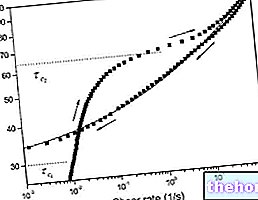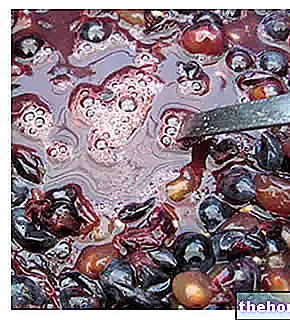Generality
On the basis of the first law in force (n ° 327 of 29 March 1951), they could be defined diet foods:

"products to which, either by manufacturing process or by addition of particular substances, particular and / or definitive dietary properties have been conferred".
Subsequently, the Legislative Decree (DL) n ° 111 of 27 January 1992, in compliance with the EEC directive 89/398, modified the wording defining more precisely that:
"dietetic foods mean all those products to which dietary properties are conferred and intended for a" specific diet for people who are in particular physiological or pathological conditions ".
Ultimately, the ULTIMA legislation specifies that the product must be SPECIFIC for the PARTICULAR nutritional needs:
- of people with DIFFICULTY "in" absorption or with PERTURBATED METABOLISM
- of people in SPECIAL PHYSIOLOGICAL CONDITIONS
- of INFANTS or CHILDREN in EARLY infancy.
Synonyms for diet foods
Diet foods are also referred to as:
- Foods for a particular nutrition - DL 111/92
- Regime foods - DL 111/92
- Diet supplements - DL 77/93.
NB. The 1992 legislation EXCLUDES from dietetic products ALL those foods ONLY ADDED or REINTEGRATED in vitamins, minerals, fibers ... except for those that SHOW to be useful for achieving a specific DIETARY goal.
In summary...
Dietary foods respect and pursue the following general characteristics:
- Distinguish yourself from everyday foods
- Making yourself fit for a nutritional goal
- Be marketed by indicating this objective
In addition, dietary foods meet the nutritional needs of SOME PARTICULAR CATEGORIES of PEOPLE:
- presenting difficulties in absorption or metabolic disturbances
- who are in particular physiological conditions for which they can BENEFIT from the intake of these products
- Infants or young children IN GOOD HEALTH (Legislative Decree 27 November 1992, art. 1 paragraphs 1 and 2).
Special provisions of the ministry
Among the dietetic foods there are some SPECIAL products (also called FOR SPECIAL USES) which require the formulation and application of some specific ministerial decrees; in detail:
- Infant formulas
- Follow-on formulas and other weaning formulas
- Other baby foods
- Foods with low (or reduced) energy value intended for weight control
- Foods intended for special medical purposes
- Foods with low sodium content, including dietary, low-sodium, asodic salts
- Gluten-free foods
- Foods suitable for intense muscular effort, especially for sportsmen
- Food intended for individuals with glucose metabolism disorders (diabetes) - DL November 27, 1992, art. 8 and art 9 paragraph 1.
Dietetic foods for special uses
- Gluten-free products: indicated for all individuals with gluten intolerance (called celiac disease).
- Low-protein or low-protein products: indicated in diseases where a reduced protein intake is required (some kidney diseases).
- High-protein products: indicated in diseases where a high protein intake is required (other diseases or other renal pathological stages).
- Products for low-sodium diets: indicated in low sodium diets (useful for the control of hypertension).
- Products free of disaccharides: indicated in cases of intolerance to these sugars (for example delactosed milk, useful in lactose or sucrose intolerance).
- Medium chain oils (MCT): they are oils containing medium-chain triglycerides and particularly indicated in some gastro-enteric pathologies (such as pancreopathies).
- Dietary oils: oils that generally have an "addition of fat-soluble vitamins (A, D, E, K); NB. They are NOT less caloric than normal ones.
- Dietary fibers: generally made up of 15-30% cellulose and the remainder of NON-cellulosic polysaccharides; indicated for the regularization of intestinal motility and in the selection of physiological bacterial flora.
- Low-calorie substitute meals: powder preparations which generally contain about 80% of proteins together with vitamins, mineral salts and low quantities of carbohydrates and lipids; NB. DO NOT guarantee an adequate nutritional balance.
Bibliography: Food and health –S. Rodato, I. Gola - Clitt - page 158: 201.


.jpg)

























